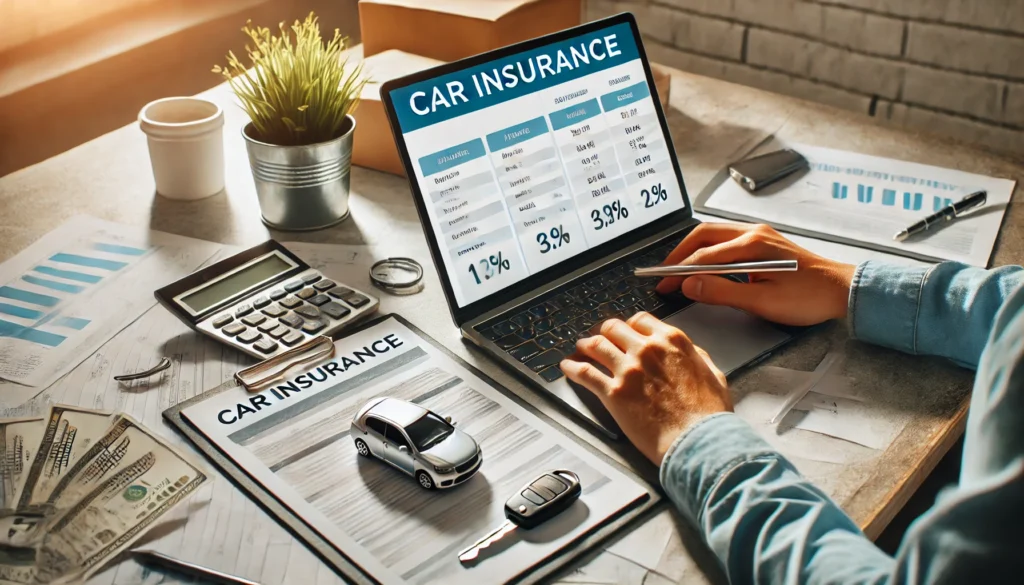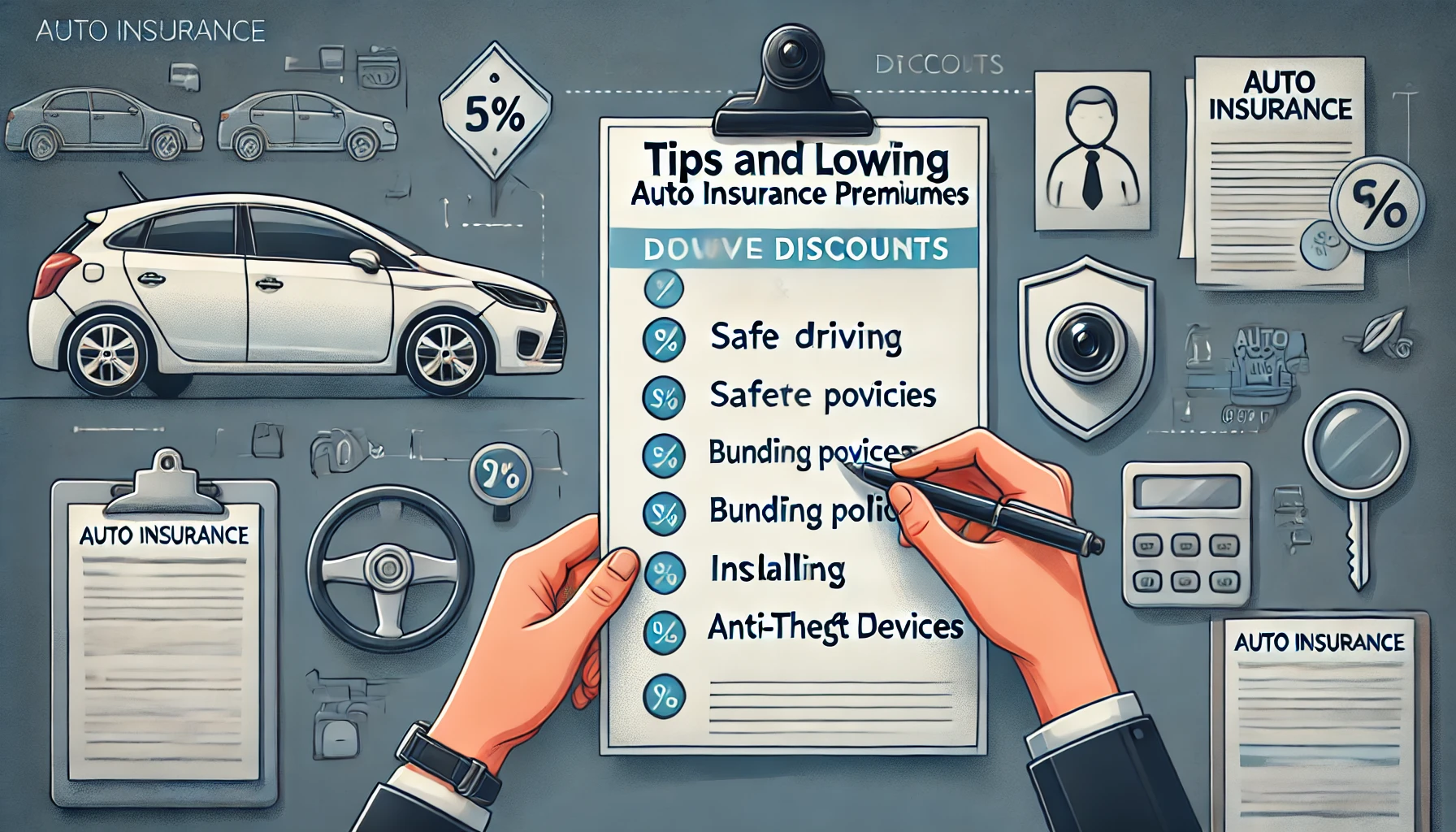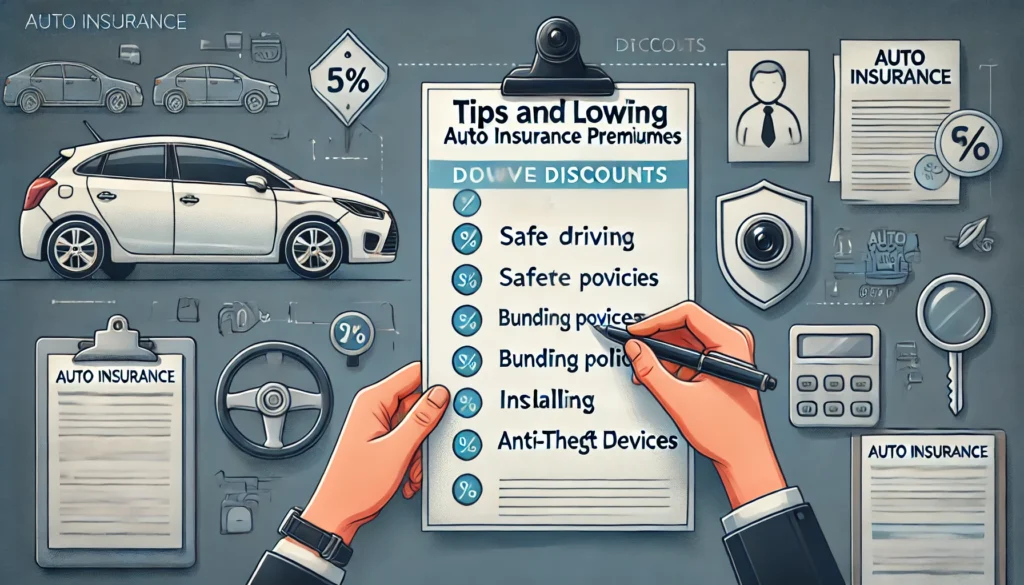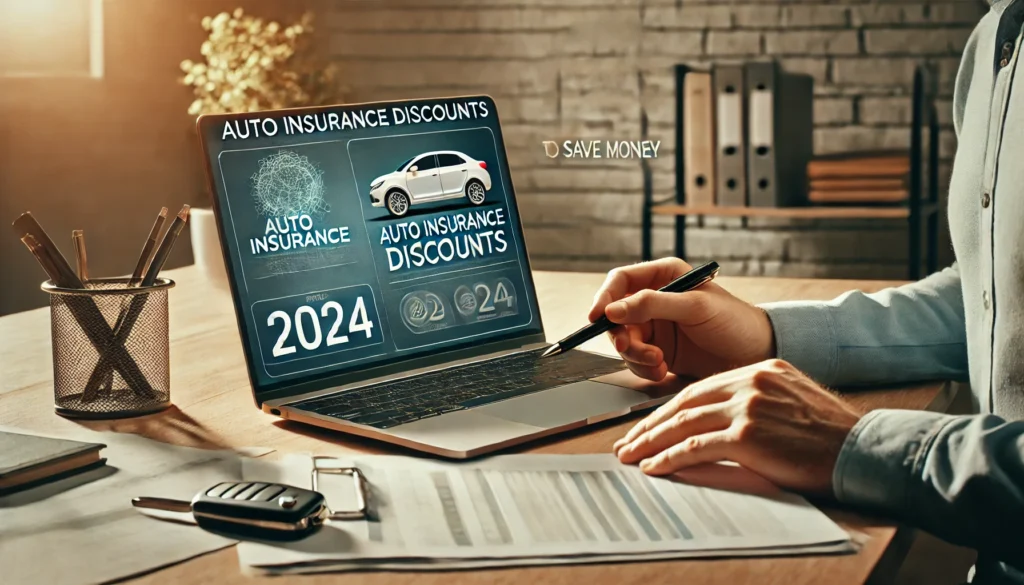- Introduction to Car Insurance and the Need to Save
- Overview of Car Insurance in the USA: Introduce the concept of car insurance, explaining how it protects drivers financially in case of accidents, theft, and other events. Mention the legal requirements for car insurance in most states.
- The Rising Cost of Car Insurance: Discuss trends in car insurance costs in the USA, mentioning factors like inflation, repair costs, and medical expenses. Highlight why saving on car insurance is crucial for financial well-being.
- Importance of Making Informed Choices: Emphasize the impact that smart choices and small adjustments can make on the overall cost of car insurance.
- Understanding the Basics of Car Insurance Coverage
- Liability Insurance: Define liability insurance as the most basic form of car insurance that covers damages to others in an accident for which the insured is at fault. Explain the two main components: bodily injury liability and property damage liability.
- Collision and Comprehensive Coverage: Describe collision coverage, which covers damages to the insured’s car in an accident, and comprehensive coverage, which covers non-collision-related incidents like theft, vandalism, and natural disasters.
- Personal Injury Protection (PIP) and Medical Payments (MedPay): Explain that PIP and MedPay help cover medical expenses for the driver and passengers after an accident, regardless of fault.
- Uninsured/Underinsured Motorist Coverage: Define this type of coverage as protection in case the insured is hit by a driver without insurance or with insufficient coverage.
- Additional Coverage Options: Discuss optional add-ons like roadside assistance, rental reimbursement, and gap insurance, and explain when these may be useful or unnecessary.
- Factors that Affect Car Insurance Premiums
- Age, Gender, and Marital Status: Explain how these demographics influence risk and, consequently, premiums. Younger drivers and males often face higher premiums, while married individuals may receive discounts.
- Driving History and Experience: Describe how a driver’s record, including accidents, tickets, and years of experience, affects insurance rates. Drivers with clean records typically qualify for lower premiums.
- Vehicle Type and Safety Ratings: Explain how the type, make, model, and safety features of a vehicle influence the cost of insurance, with safer, less expensive cars generally leading to lower rates.
- Location and Driving Habits: Discuss how geographic factors, such as city vs. rural areas and the average number of miles driven, affect insurance costs. High-traffic areas or places with higher accident rates lead to higher premiums.
- Credit Score: Explain that in most states, a higher credit score can lead to lower premiums, as insurers view those with good credit as less risky.
- How to Compare Car Insurance Quotes Effectively
- Gathering Quotes from Multiple Providers: Provide tips on collecting quotes from at least three insurers for an accurate comparison.
- Using Online Comparison Tools: Describe reputable online tools that allow users to compare rates from multiple companies quickly, highlighting the convenience of these resources.
- Understanding the Fine Print: Emphasize the importance of reviewing policy details beyond just the premium, including deductibles, coverage limits, and any exclusions.
- Evaluating Insurer Reputation and Customer Service: Explain why it’s crucial to consider the customer service reputation of insurers, as quick and efficient claims handling can be valuable in the event of an accident.
- Timing Your Quote Comparisons: Recommend reviewing and comparing car insurance rates annually or after major life changes (e.g., moving, marriage, or a new vehicle purchase).
- Maximizing Discounts and Savings Opportunities
- Good Driver Discounts: Explain how maintaining a clean driving record can lead to lower premiums and discounts from most insurers.
- Multi-Policy Bundling: Discuss the benefits of bundling car insurance with other types of insurance, such as home or renter’s insurance, for significant discounts.
- Low-Mileage Discounts: Describe low-mileage discounts for drivers who don’t drive as often, which insurers see as lower risk for accidents.
- Defensive Driving Course Discounts: Explain how completing a certified defensive driving course can help drivers lower their premiums and even improve driving skills.
- Loyalty and New Customer Discounts: Highlight how long-term customers may qualify for loyalty discounts, while new customers may also find special introductory offers.
- Student Discounts: Outline discounts available for students, particularly good student discounts for those maintaining a high GPA.
- Choosing the Right Deductible
- Understanding Deductibles and Their Impact: Explain how a deductible is the amount a policyholder pays out-of-pocket before insurance kicks in. Discuss the trade-off between high and low deductibles.
- High vs. Low Deductible Choices: Describe how choosing a higher deductible can reduce monthly premiums, making it an option for drivers who want to save and have an emergency fund.
- Finding the Balance for Your Budget: Provide tips on assessing financial readiness to cover a higher deductible in case of an accident versus the need for affordable monthly premiums.
- Adjusting Your Coverage to Save Money
- Reevaluating Collision and Comprehensive Coverage: Discuss how drivers of older cars or cars with low market value might consider dropping collision and comprehensive coverage to save.
- Adjusting Coverage Limits Based on Needs: Suggest adjusting liability limits to state minimum requirements to reduce premiums, while explaining potential risks of low liability coverage.
- Considering Pay-Per-Mile Insurance: Describe pay-per-mile insurance options for low-mileage drivers as a cost-effective alternative, where premiums are based on miles driven.
- Opting Out of Extras: Explain how removing optional coverages like rental reimbursement or roadside assistance may be feasible for those who rarely use these services, saving on monthly premiums.
- Improving Your Credit Score to Lower Car Insurance Costs
- The Role of Credit Score in Insurance Rates: Explain how credit scores impact car insurance rates in most states, with higher scores generally resulting in lower premiums.
- Tips for Improving Credit: Provide actionable tips for improving credit scores, such as paying bills on time, reducing credit card balances, and avoiding new credit applications.
- Monitoring Your Credit Regularly: Suggest using credit monitoring services to track progress and correct any errors on credit reports that could impact insurance rates.
- Understanding State Regulations on Credit Use: Note that a few states restrict the use of credit scores for insurance purposes, so drivers should check local regulations.
- Switching Car Insurance Companies to Save Money
- When to Consider Switching Insurers: Explain situations when switching providers may make sense, such as rate hikes, poor customer service, or new discount opportunities.
- Avoiding Fees and Penalties: Describe potential fees for early cancellation and suggest timing the switch close to the renewal date to avoid penalties.
- Steps for Switching Insurance: Provide a step-by-step guide on switching insurance companies, including obtaining proof of new coverage and notifying the previous insurer.
- Ensuring Continuous Coverage: Stress the importance of ensuring there’s no gap in coverage when switching to avoid fines and potential risk.
- Saving Money with Safe Driving Technology
- Telematics Programs: Explain how telematics, or usage-based insurance, monitors driving behavior through apps or devices, rewarding safe drivers with discounts.
- Safety Features in New Cars: Highlight how newer cars with advanced safety features (e.g., automatic braking, lane departure warnings) may qualify for lower premiums.
- Anti-Theft Devices: Describe how anti-theft systems, such as alarms or GPS tracking, can reduce car insurance costs by lowering the risk of theft.
- Additional Ways to Save on Car Insurance
- Seasonal or Temporary Insurance for Seasonal Vehicles: Discuss options for drivers of seasonal vehicles, such as motorcycles or convertibles, who may only need coverage part of the year.
- Considering Usage-Based Insurance: Describe how usage-based insurance, such as pay-as-you-drive programs, charges based on mileage or driving behavior and may offer savings for low-mileage drivers.
- Raising Awareness of Accident Forgiveness: Explain how accident forgiveness programs prevent rate increases after a first accident and can be a valuable option for maintaining low premiums.
- Maintaining Consistent Insurance: Highlight how maintaining continuous insurance coverage can prevent rate hikes, as insurers may penalize drivers for lapses in coverage.
- Real-Life Scenarios and Examples
- Example of a Young Driver Reducing Premiums: Share a case of a young driver who saves on premiums through a good student discount and safe driving technology.
- Family Saving on Multi-Car Policy: Describe a family that saves by bundling multiple cars and home insurance under one policy with a multi-policy discount.
- Senior Driver Lowering Premiums: Outline a scenario where a senior driver saves on car insurance by switching to a lower-mileage policy and taking a defensive driving course.
14. State-Specific Tips for Saving on Car Insurance
- Understanding State Minimum Requirements: Explain that each state has different minimum car insurance requirements. Some drivers may save by choosing only the required minimum, while others may need additional coverage based on local risk factors.
- No-Fault vs. At-Fault States: Describe the difference between no-fault and at-fault states. In no-fault states, each driver’s insurance covers their own damages, which can impact the types of coverage needed and the potential for savings.
- State-Provided Resources for Low-Cost Insurance: Mention that some states offer low-cost insurance programs for qualifying residents, such as California’s Low-Cost Auto Insurance Program (CLCA), which provides affordable insurance for eligible low-income drivers.
- Regional Discounts: Discuss how certain insurers offer regional discounts based on state-specific factors like low accident rates or reduced theft risk. Encourage readers to ask insurers about discounts related to their location.
- State Laws on Credit and Gender Considerations: Explain that some states restrict insurers from using credit scores, gender, or marital status to determine premiums. Knowing these rules can help drivers choose insurers that align with their best financial interest.
15. Car Insurance for High-Risk Drivers
- Defining High-Risk Drivers: Outline what qualifies as a high-risk driver, such as those with multiple accidents, traffic violations, DUIs, or young, inexperienced drivers.
- High-Risk Insurance Options: Explain options like “assigned risk” or state-provided insurance pools for drivers who may not qualify for standard insurance due to high risk.
- Tips for Reducing High-Risk Status: Provide actionable tips for improving status over time, such as taking a defensive driving course, maintaining continuous insurance, and driving responsibly.
- Non-Owner Car Insurance: Describe non-owner insurance, an option for high-risk drivers who don’t own a car but may still need liability coverage when borrowing or renting vehicles.
- SR-22 Filings: Explain what SR-22 insurance is, when it’s required (usually after a DUI), and how to manage the added costs. Emphasize that drivers with SR-22 requirements should look for insurers who specialize in these filings.
16. Car Insurance for Unique Situations and Special Vehicles
- Classic and Antique Car Insurance: Describe specialized insurance for classic and antique cars, often with agreed-value coverage rather than standard market value, and how collectors can save by choosing policies designed for rare vehicles.
- Rideshare Driver Insurance: Explain how rideshare drivers (e.g., Uber or Lyft) need a unique type of insurance coverage that goes beyond personal policies, with many insurers offering hybrid rideshare coverage to close the gap between personal and commercial insurance.
- Temporary or Short-Term Car Insurance: Discuss situations in which temporary car insurance might be needed, such as for rental cars, and how to obtain short-term coverage that’s both affordable and comprehensive.
- Motorcycle and RV Insurance: Provide an overview of insurance options for motorcycles, RVs, and other recreational vehicles, highlighting how bundling or seasonal insurance can lead to savings.
- Seasonal or Lay-Up Policies for Rarely Used Vehicles: Explain lay-up insurance policies for vehicles that are not driven year-round, allowing for reduced coverage (e.g., theft or fire only) during off-seasons for cost savings.
17. Reviewing and Adjusting Your Car Insurance Annually
- Reevaluating Coverage Needs Each Year: Encourage readers to review their coverage annually, considering life changes like moving to a safer area, purchasing a new car, or changes in daily mileage, which can impact premiums.
- Shopping Around at Renewal: Emphasize the importance of comparing quotes from multiple insurers at renewal time to ensure the best rate, as loyalty doesn’t always guarantee savings.
- Adjusting Coverage for an Aging Vehicle: Suggest that as vehicles age and decrease in value, drivers might consider lowering or dropping comprehensive and collision coverage to save money.
- Assessing New Discounts: Remind readers to ask about any new discounts that may apply, such as safe driver programs, low mileage, or new safety features installed in their vehicle.
- Considering Inflation and Rising Costs: Explain how inflation can affect repair and medical costs, potentially warranting adjustments in liability limits for better protection in case of a serious accident.
18. Navigating the Claims Process and Saving on Claims Costs
- When to File a Claim: Offer guidance on when it makes financial sense to file a claim, suggesting that smaller incidents may be less costly to handle out of pocket to avoid premium increases.
- Choosing the Right Repair Shop: Explain the benefits of using an insurer-preferred repair shop, which may offer lower repair costs and direct billing to insurers, helping policyholders save money.
- Managing Deductibles to Lower Out-of-Pocket Costs: Describe how to manage deductibles effectively, including adjusting them based on financial circumstances and avoiding high deductibles when facing expensive repairs.
- Avoiding Claim Surcharges and Rate Hikes: Provide strategies to prevent rate hikes after an accident, such as maintaining a safe driving record, enrolling in accident forgiveness programs, or taking steps to repair damage independently when affordable.
- Leveraging Accident Forgiveness Programs: Highlight how accident forgiveness programs can protect drivers from premium increases after a first-time accident and encourage policyholders to ask insurers about eligibility and costs for adding this benefit.
Conclusion
Saving on car insurance in the USA is achievable with a combination of informed decision-making, regular policy reviews, and proactive adjustments to coverage. By understanding the various factors that affect premiums—such as driving history, vehicle type, and location—drivers can make smarter choices about their insurance needs. Whether by exploring available discounts, increasing deductibles, bundling policies, or comparing quotes from multiple providers, there are numerous ways to lower costs without sacrificing necessary coverage.
For unique situations, such as high-risk drivers, rideshare drivers, or classic car owners, specific insurance options are available that cater to these unique needs. Additionally, conducting an annual review of your policy and adjusting coverage as your car ages or your driving habits change can lead to substantial savings over time. It’s also essential to be mindful of the claims process and weigh the costs of filing minor claims, as this can impact future premiums.
#1. What type of job are you looking for?
#2. What is your work experience level?
#3. What is your English level?
#4. Where are you willing to work?
#5. When can you start?
In summary, the key to saving on car insurance is balancing cost with adequate protection. By staying informed about your options, taking advantage of discounts, and periodically reassessing your insurance needs, you can achieve financial peace of mind and keep car insurance costs manageable. Remember, a well-chosen insurance plan not only saves money but also provides the right level of protection to safeguard you and your assets on the road.











